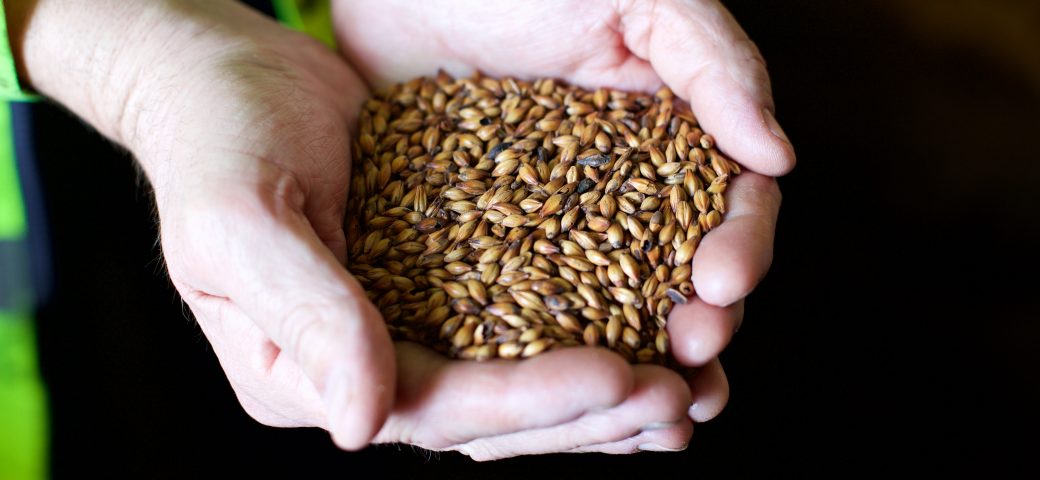Traditionally making up anywhere from 5%-20% of the total malt used in each beer recipe, different cara and crystal malts possess various attributes that enhance the flavour of that pint at the end of the process.
In this blog, UK Sales Director Jamie Ramshaw aims to explain everything from the science behind how crystal malt is made, the process that we use here at Simpsons Malt and also how to differentiate between good crystal malt and bad crystal malt.
So, without further ado, let’s get cracking…
The crystal malt making process
Using the chemistry that is built into every grain of barley that enters our maltings, the aim when it comes to producing crystal malt is to convert the starch in the barley endosperm into crystallised sugar.
Once the grains have been quality checked upon intake, the first step in the crystal malt making process is steeping. During this, the grains go through spells of being immersed in water followed by air rests, with the duration of each of those phases actioned on a batch-by-batch basis in order to achieve optimum homogeneity.
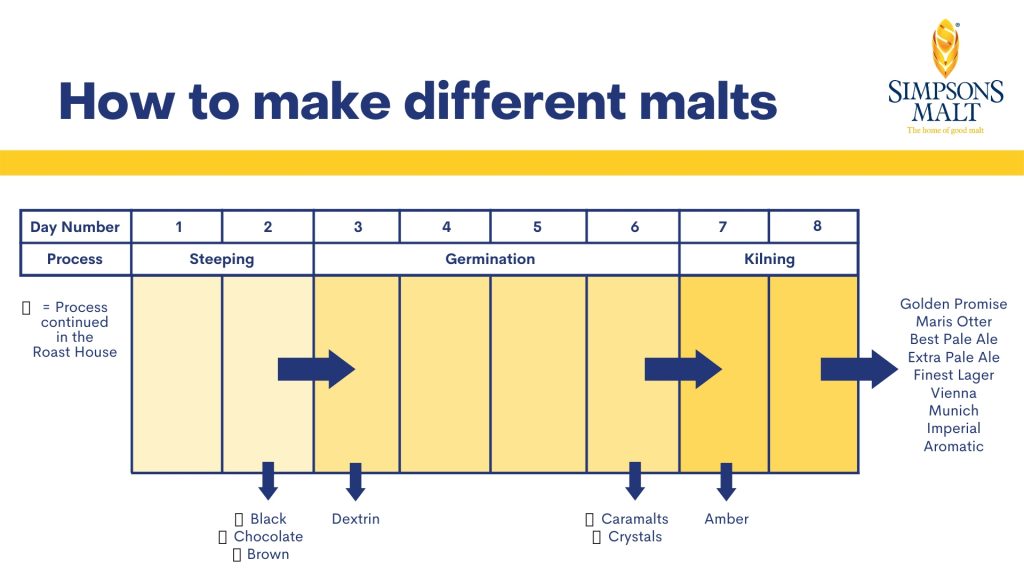
As a result of steeping, the moisture in the grains increases, kicking the barley embryo into life.
We then allow the grains to germinate. In this carefully managed environment with regards to the temperature and humidity, the endosperm of the grain is modified, in that the cell walls and protein matrix are degraded by enzymes produced by the embryo. This allows for the starch to be accessed for further degradation.
Germination lasts for four to five days, which is the same for base malts. However, while base malts would be gently kilned for a further one to two days, for the production of crystal malts the endosperm of the grain needs to remain wet when we turn the heat up.
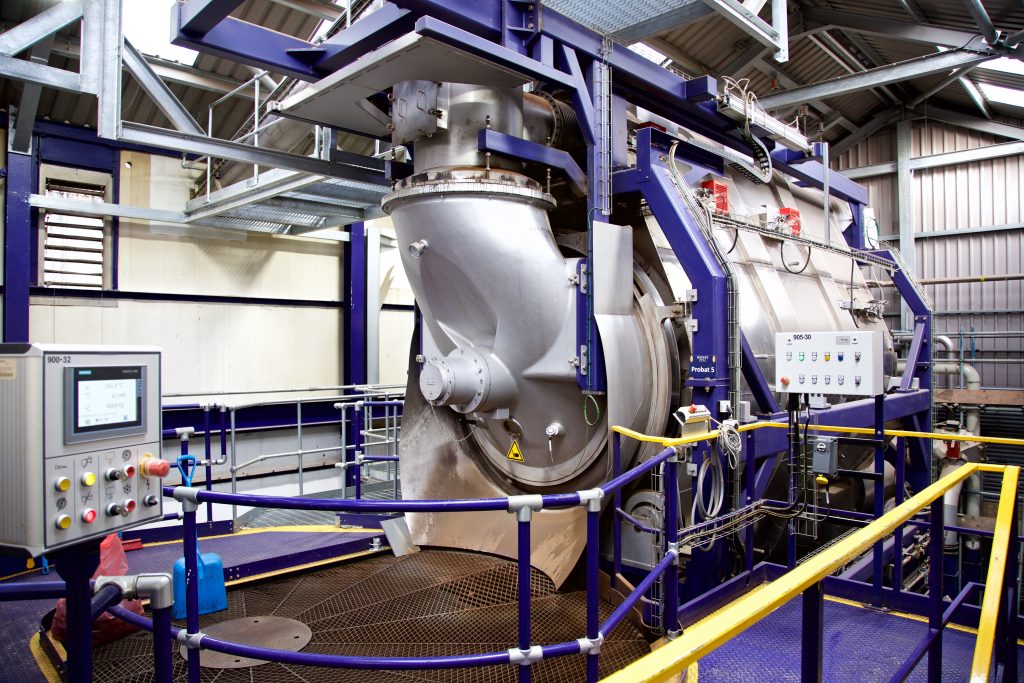
One of our five roasting drums
Enter the roasting phase, where the grains are transferred to our roast house, which is home to five state-of-the-art roasting drums. Each batch is fed into a drum and the roasting process takes place.
This starts with the stewing phase, where the enzymes present in the wet endosperm continue the saccharification of the starchy interior of the grain. During this phase, the endosperm becomes liquefied and the grains will pop if you squeeze them. This is a sign that the stewing phase is complete.
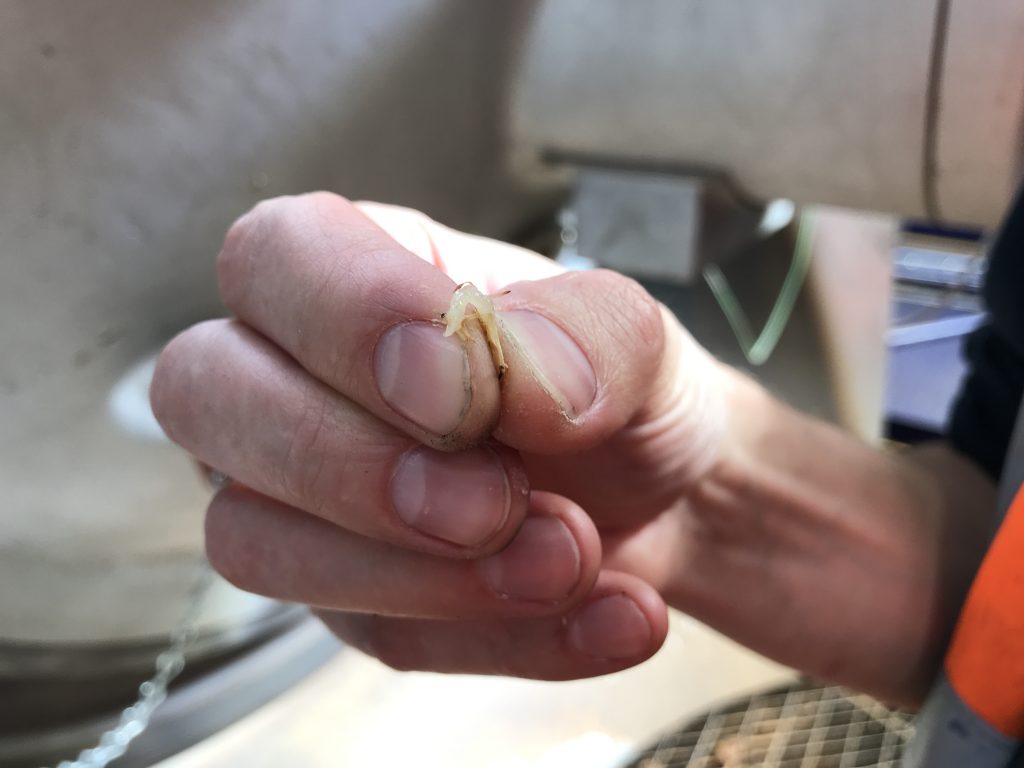
Once our team of expert roasters are happy with the stew, which they analyse on a batch-by-batch basis, the moisture needs to be driven out, so the temperature inside the drum is increased further to dry the malt out and then roast it.
This is where the colour and, more importantly, the flavour, is produced. The temperatures and times used for the different products are a closely guarded secret, although both vary in order to achieve the different colours and flavours that make up our extensive range of cara and crystal malts.
Only when a member of our roast house team is happy with the product, with a sample taken from each batch and analysed, is the drum opened and the grain rapidly cooled, giving us the finished, crystallised malt.
Five keys to creating good crystal malt
Back in the early-to-mid 2000s, Peter Simpson, alongside then Roast House Production Manager Chris Trumpess and his team, set out to produce the best crystal malt possible.
Through their extensive research and development, they attributed the following five points to being able to create great crystal malt and, to this day, Peter’s catchphrase – “Quality, quality, quality” – is central to every batch that we produce.
1. The Barley
Back in the day, it wouldn’t be unusual for out of spec (rejected) barley to be designated for usage in the roast house, with the good quality barley kept for base malts. But if you want to get consistently high crystallisation in the final product, you need consistency in the raw material. As a result, we set tight specifications for the barley that we grow because as we know that impacts the flavour of the final product.
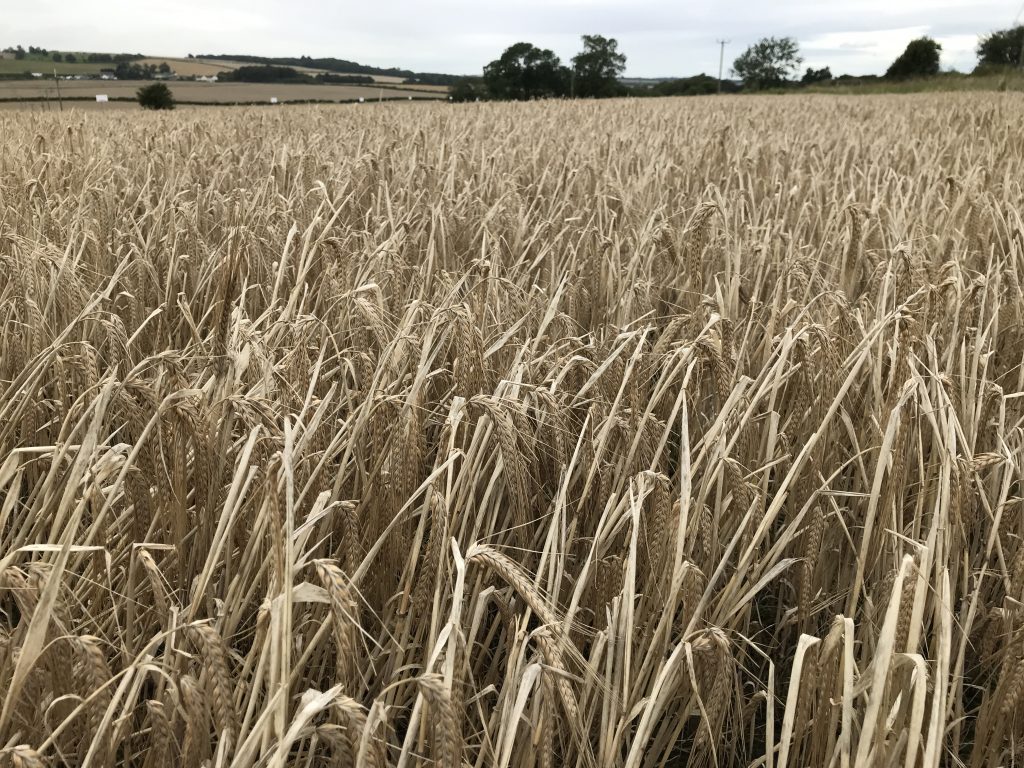
2. The Process
We outlined all of this in the earlier paragraphs but, to add, we consider every step of the malting process – not just the roasting phase – to be equally important in order to achieve the quality that we strive towards. The confidence we have in our processes, along with our equipment (see below), has also allowed us to innovate and be at the forefront of malt research and development, with the launch in recent years of Simpsons DRC, Red Rye Crystal, Golden Naked Oats and Crystal T50.
3. The Kit
In our drive to produce high-quality crystal malt, we certainly haven’t needed to reinvent the wheel. With the freedom to choose what we invest in due to being a family-owned independent business, we have just bought the most modern equipment available with the ability to control the stew and cure to within specific temperature ranges. The roll of the roasting drum allows for 100% homogeneity and there’s no burn on our husks. In recent years, we have invested significantly in new roasting equipment, which has increased our roast house capacity by 20% while continuing to give us complete control over the roasting phase. But, as stated in bullet point No.2, what happens in the roasting drum is just one part of a larger process.
4. The Blend
Members of our roast house team carefully manage the closing minutes of each batch of malt, endeavouring to give us the tightest colour range possible between batches, with maximum permitted ranges. Why do we do this? Well, we believe it’s vitally important in delivering consistency and quality. Through our experience, we believe that crystallisation and colour together are linked to the best flavours.
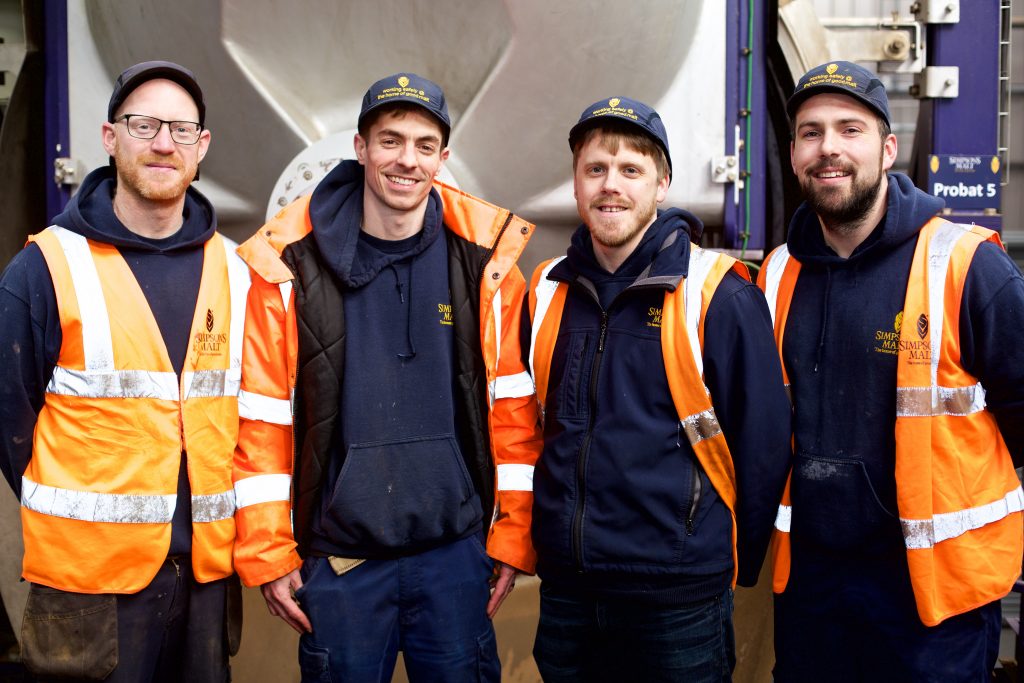
5. Our People
 From our agronomy team at our agricultural merchanting division McCreath Simpson & Prentice, who track the progress of our barley throughout the year, to staff in our bagging hall, who are responsible for the packaging and shipping of our products, everybody possesses great passion and pride in their role in creating our malts, with information being passed on through generations. One member of staff even has a “Malt Life” tattoo! We also have our own taste panel, too, who ensure that the quality of the finished product doesn’t deviate from the high standards we set ourselves.
From our agronomy team at our agricultural merchanting division McCreath Simpson & Prentice, who track the progress of our barley throughout the year, to staff in our bagging hall, who are responsible for the packaging and shipping of our products, everybody possesses great passion and pride in their role in creating our malts, with information being passed on through generations. One member of staff even has a “Malt Life” tattoo! We also have our own taste panel, too, who ensure that the quality of the finished product doesn’t deviate from the high standards we set ourselves.
Good crystal malt vs Bad crystal malt
Good crystal malt should have a clean, glassy endosperm without burnt or white areas – it’s called crystal malt for a reason; it should look like crystal!
It should not have hard bits in it when you eat it. It should have the flavour you expect and not taste darker than that product.
If you look at the image below, you will see the grains are fully modified, which means we can crystallise the whole endosperm. These grains will be sweet and clean in flavour.

Poor crystal malt, meanwhile, will look biscuity in the middle and, as a result, there will be biscuit and burnt flavours galore.
If you’ve got a question you’d like to ask about this blog, get in touch with our team, or speak to us on Facebook, Twitter or Instagram.

